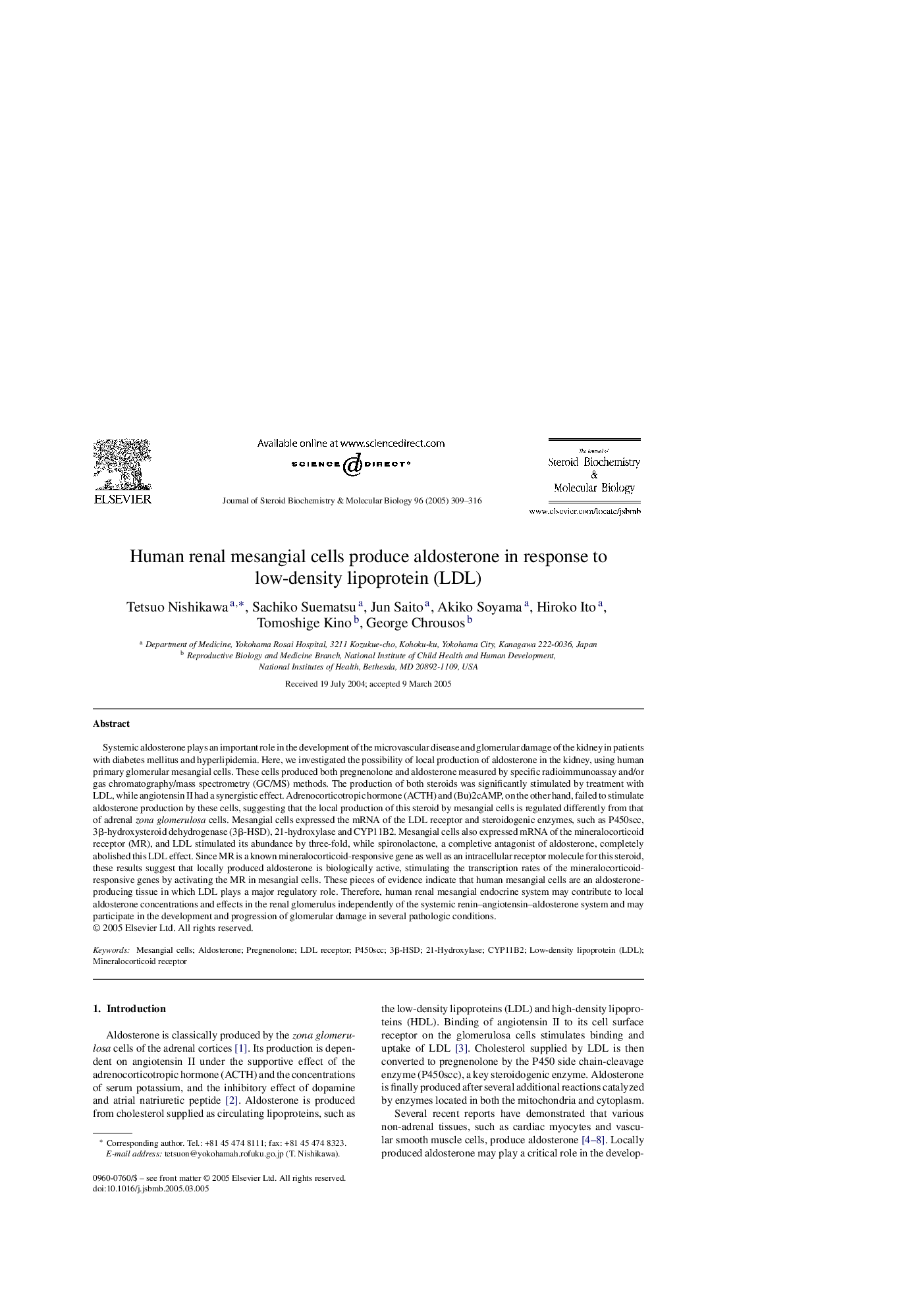| کد مقاله | کد نشریه | سال انتشار | مقاله انگلیسی | نسخه تمام متن |
|---|---|---|---|---|
| 9892088 | 1541098 | 2005 | 8 صفحه PDF | دانلود رایگان |
عنوان انگلیسی مقاله ISI
Human renal mesangial cells produce aldosterone in response to low-density lipoprotein (LDL)
دانلود مقاله + سفارش ترجمه
دانلود مقاله ISI انگلیسی
رایگان برای ایرانیان
کلمات کلیدی
موضوعات مرتبط
علوم زیستی و بیوفناوری
بیوشیمی، ژنتیک و زیست شناسی مولکولی
زیست شیمی
پیش نمایش صفحه اول مقاله

چکیده انگلیسی
Systemic aldosterone plays an important role in the development of the microvascular disease and glomerular damage of the kidney in patients with diabetes mellitus and hyperlipidemia. Here, we investigated the possibility of local production of aldosterone in the kidney, using human primary glomerular mesangial cells. These cells produced both pregnenolone and aldosterone measured by specific radioimmunoassay and/or gas chromatography/mass spectrometry (GC/MS) methods. The production of both steroids was significantly stimulated by treatment with LDL, while angiotensin II had a synergistic effect. Adrenocorticotropic hormone (ACTH) and (Bu)2cAMP, on the other hand, failed to stimulate aldosterone production by these cells, suggesting that the local production of this steroid by mesangial cells is regulated differently from that of adrenal zona glomerulosa cells. Mesangial cells expressed the mRNA of the LDL receptor and steroidogenic enzymes, such as P450scc, 3β-hydroxysteroid dehydrogenase (3β-HSD), 21-hydroxylase and CYP11B2. Mesangial cells also expressed mRNA of the mineralocorticoid receptor (MR), and LDL stimulated its abundance by three-fold, while spironolactone, a completive antagonist of aldosterone, completely abolished this LDL effect. Since MR is a known mineralocorticoid-responsive gene as well as an intracellular receptor molecule for this steroid, these results suggest that locally produced aldosterone is biologically active, stimulating the transcription rates of the mineralocorticoid-responsive genes by activating the MR in mesangial cells. These pieces of evidence indicate that human mesangial cells are an aldosterone-producing tissue in which LDL plays a major regulatory role. Therefore, human renal mesangial endocrine system may contribute to local aldosterone concentrations and effects in the renal glomerulus independently of the systemic renin-angiotensin-aldosterone system and may participate in the development and progression of glomerular damage in several pathologic conditions.
ناشر
Database: Elsevier - ScienceDirect (ساینس دایرکت)
Journal: The Journal of Steroid Biochemistry and Molecular Biology - Volume 96, Issues 3â4, August 2005, Pages 309-316
Journal: The Journal of Steroid Biochemistry and Molecular Biology - Volume 96, Issues 3â4, August 2005, Pages 309-316
نویسندگان
Tetsuo Nishikawa, Sachiko Suematsu, Jun Saito, Akiko Soyama, Hiroko Ito, Tomoshige Kino, George Chrousos,